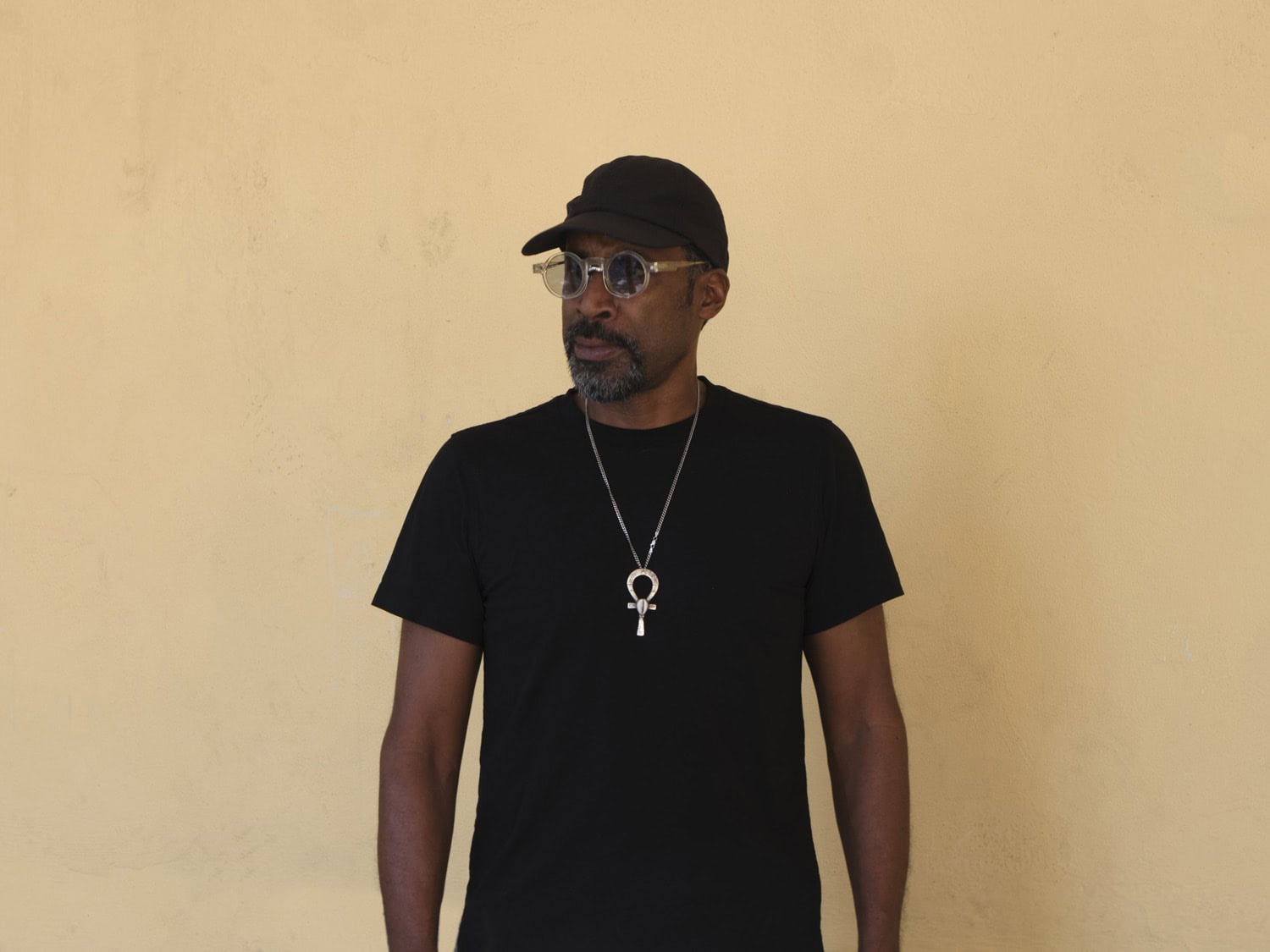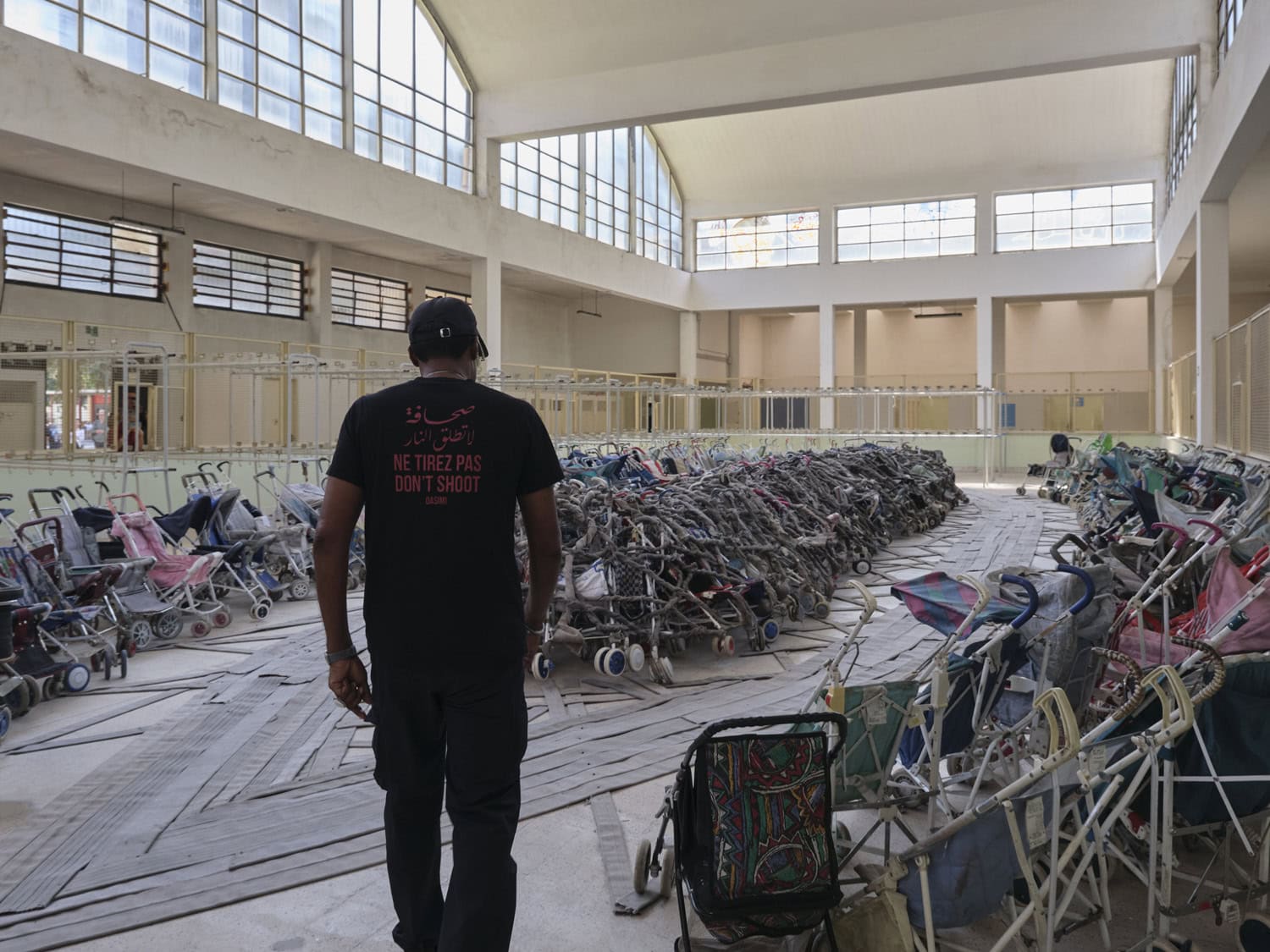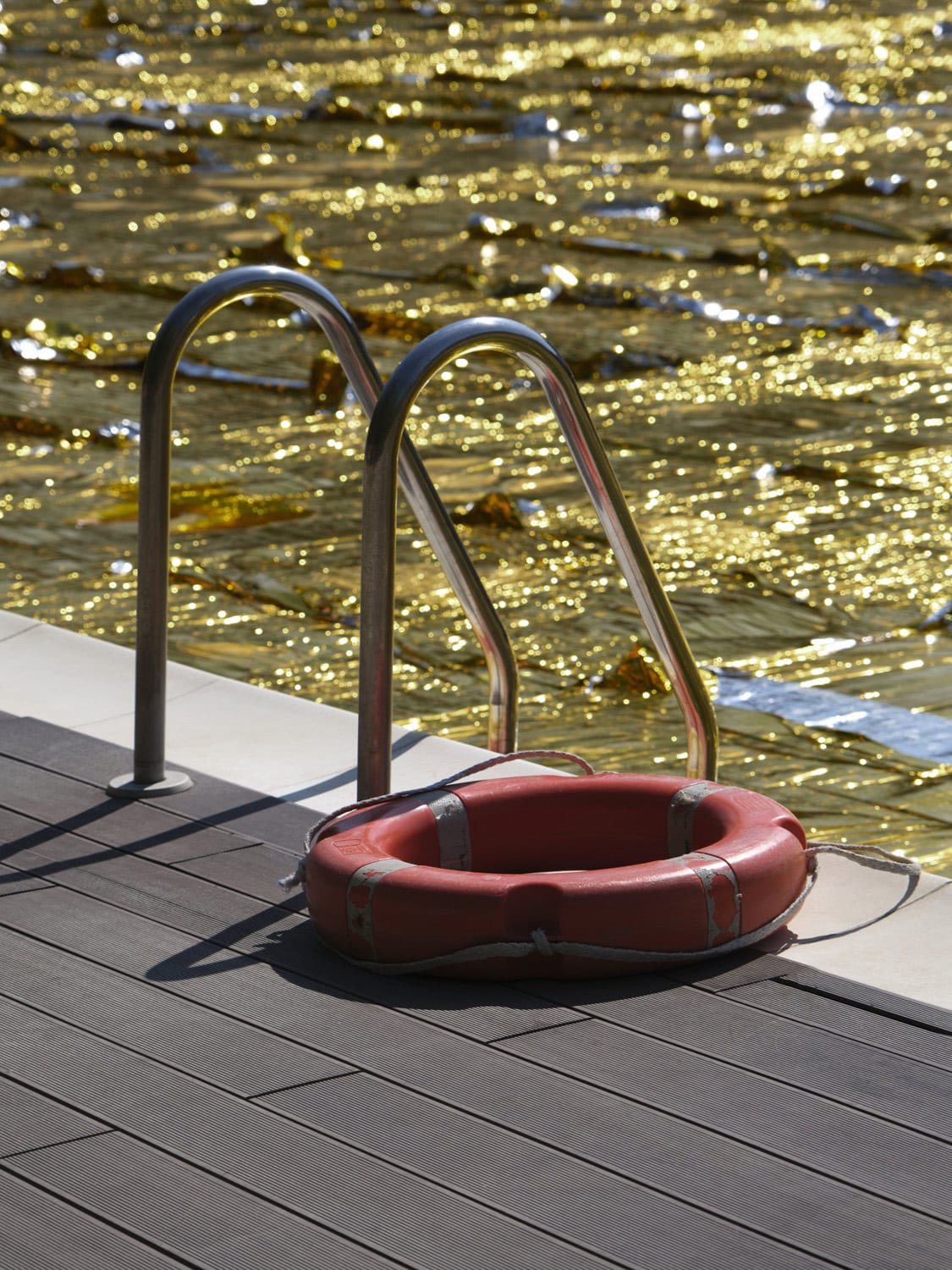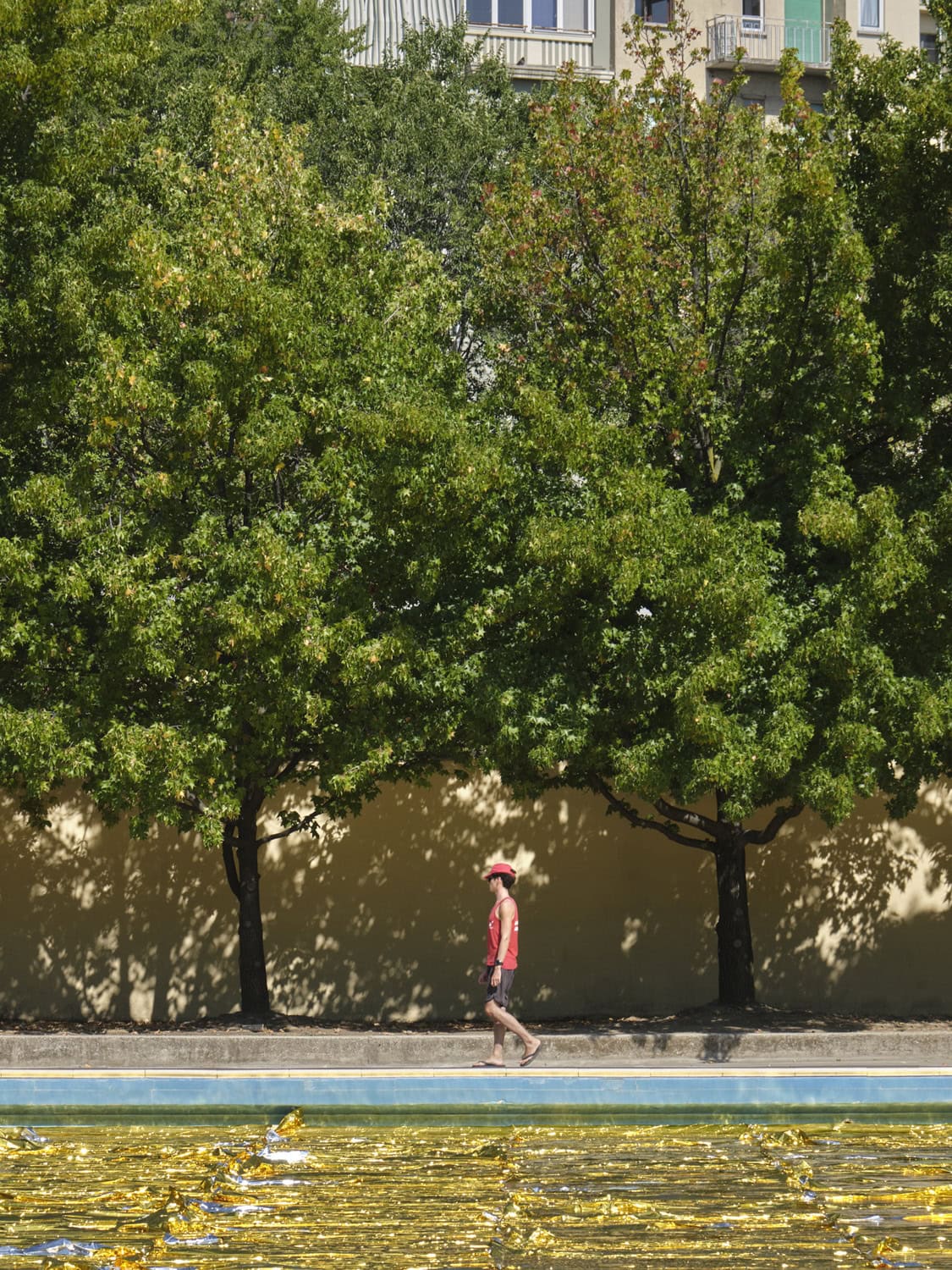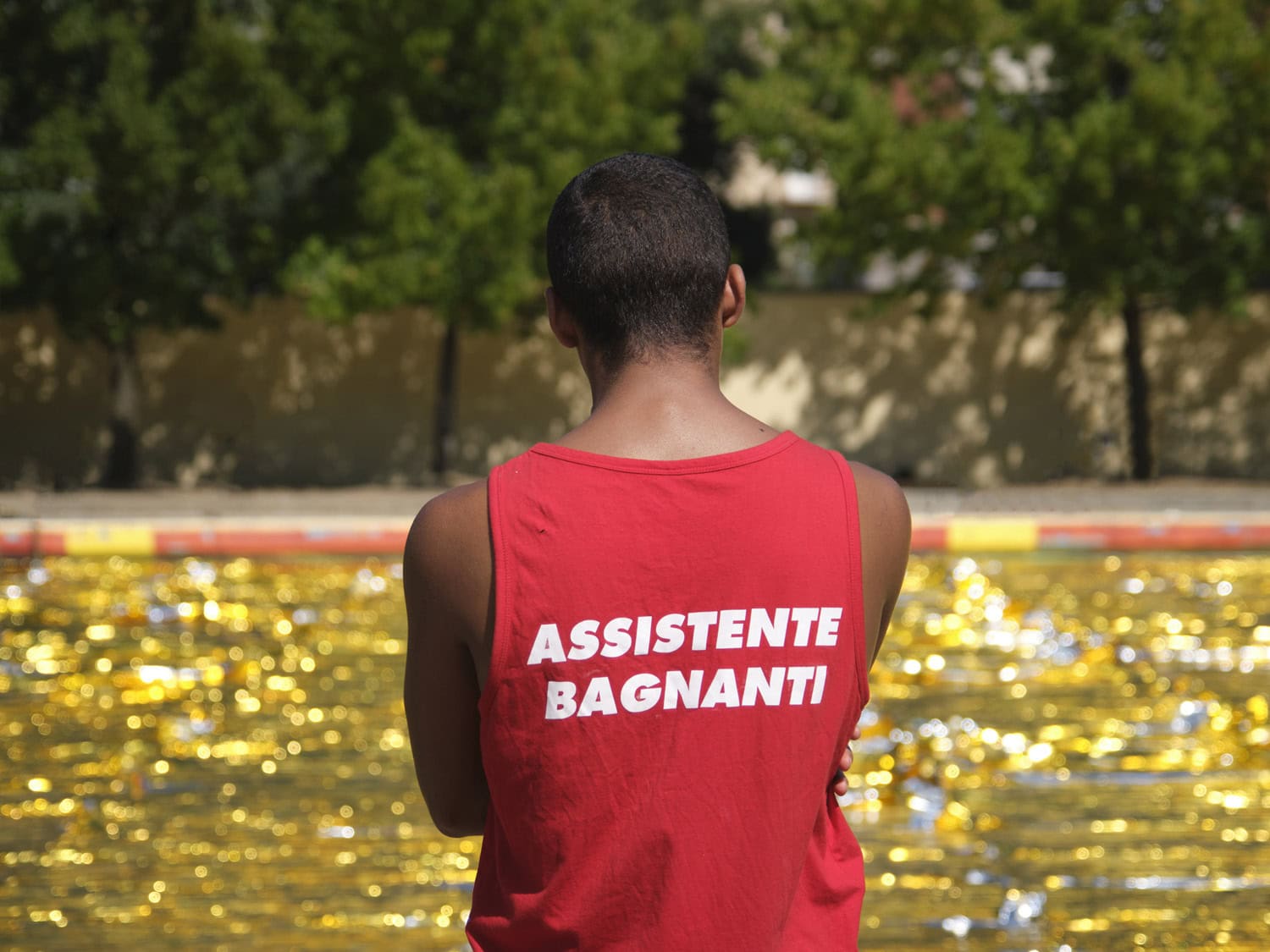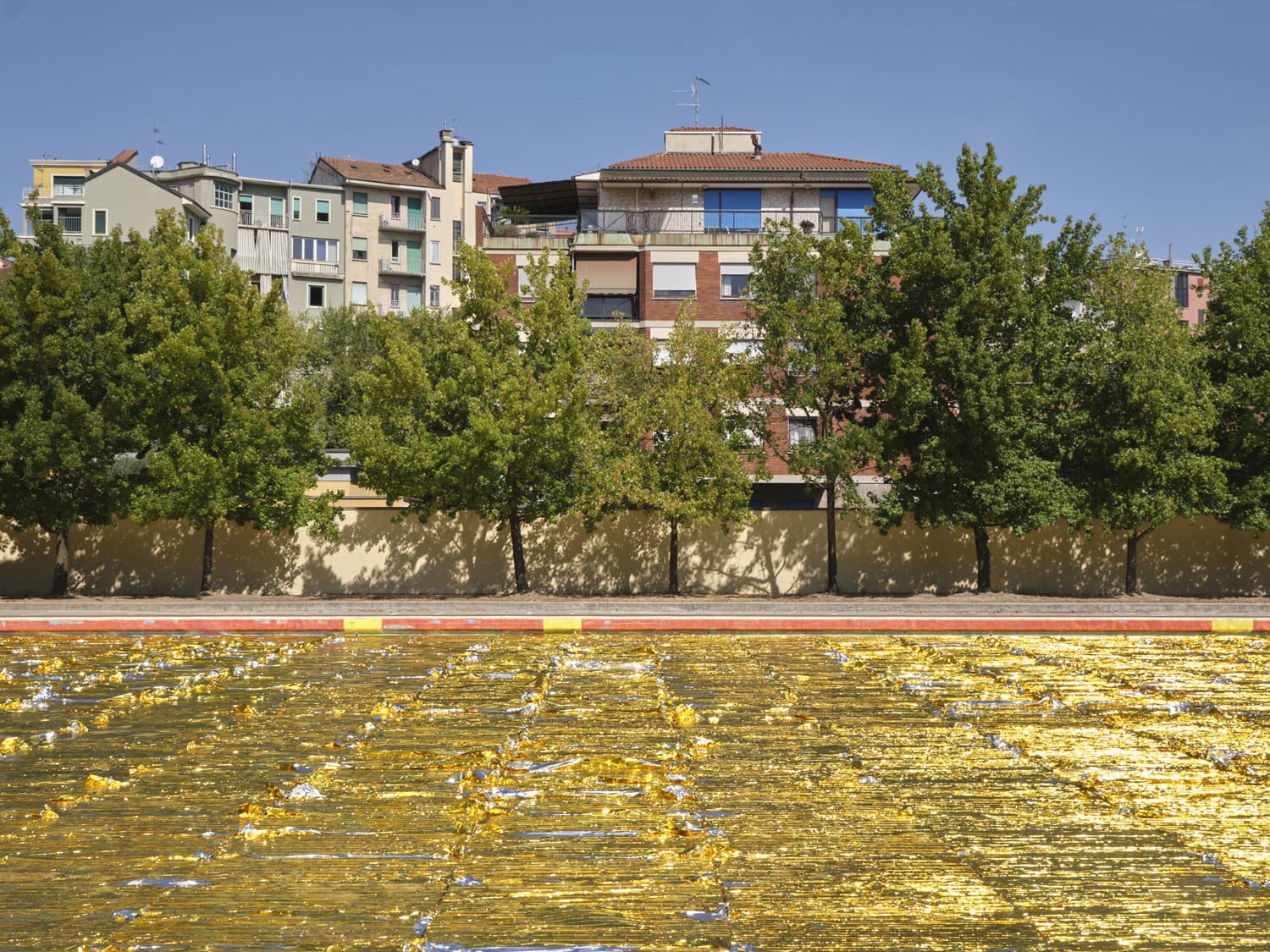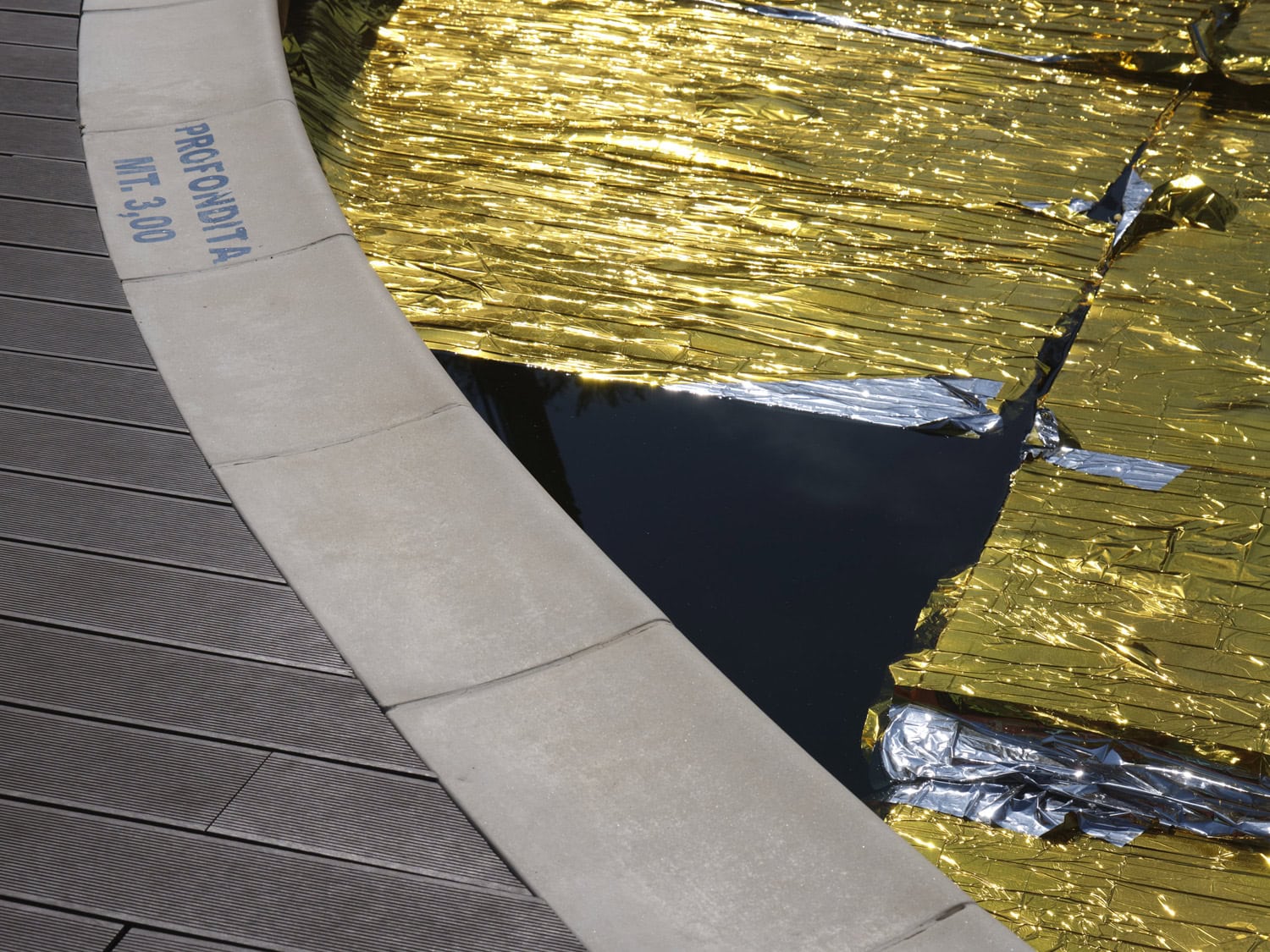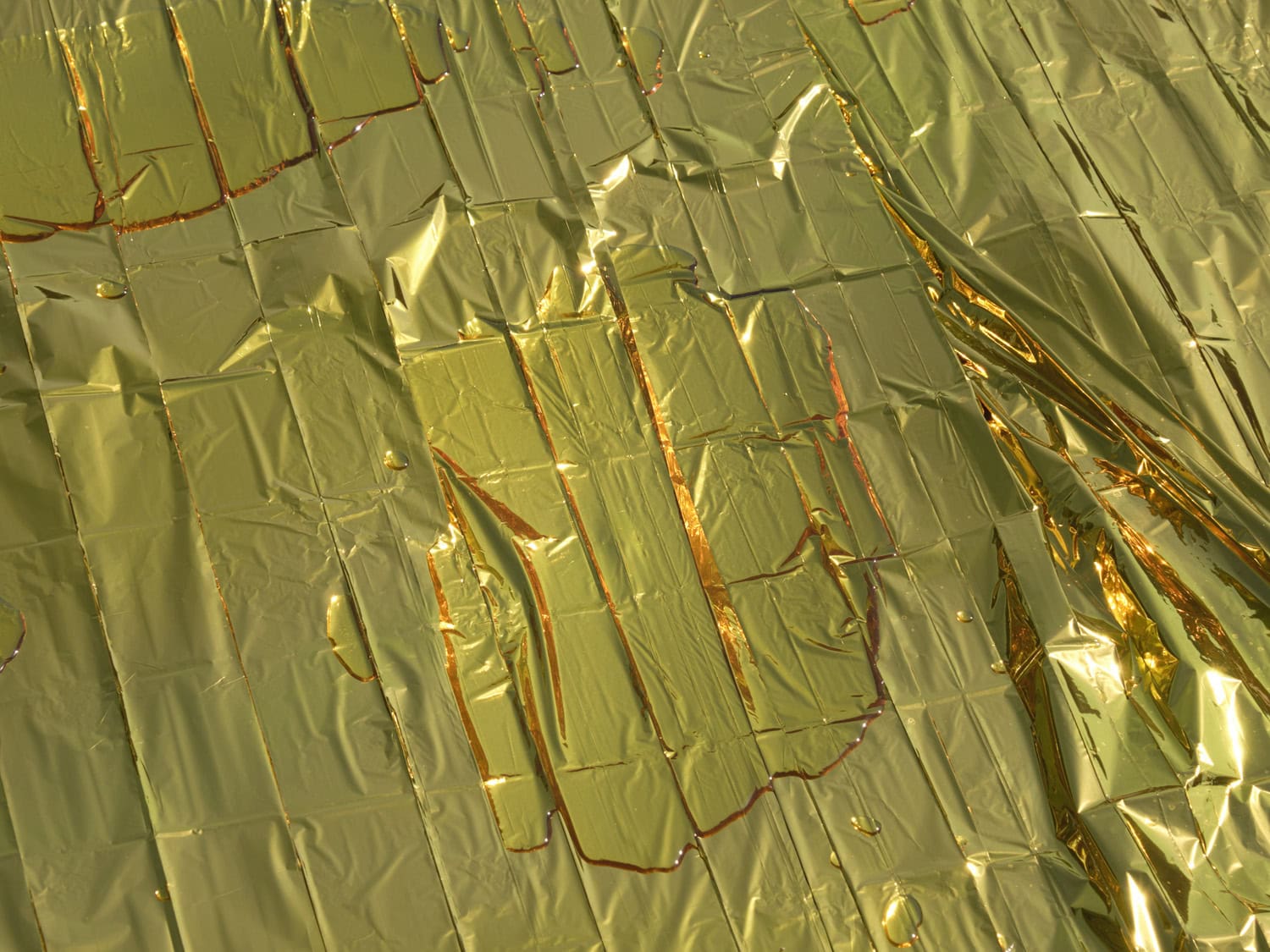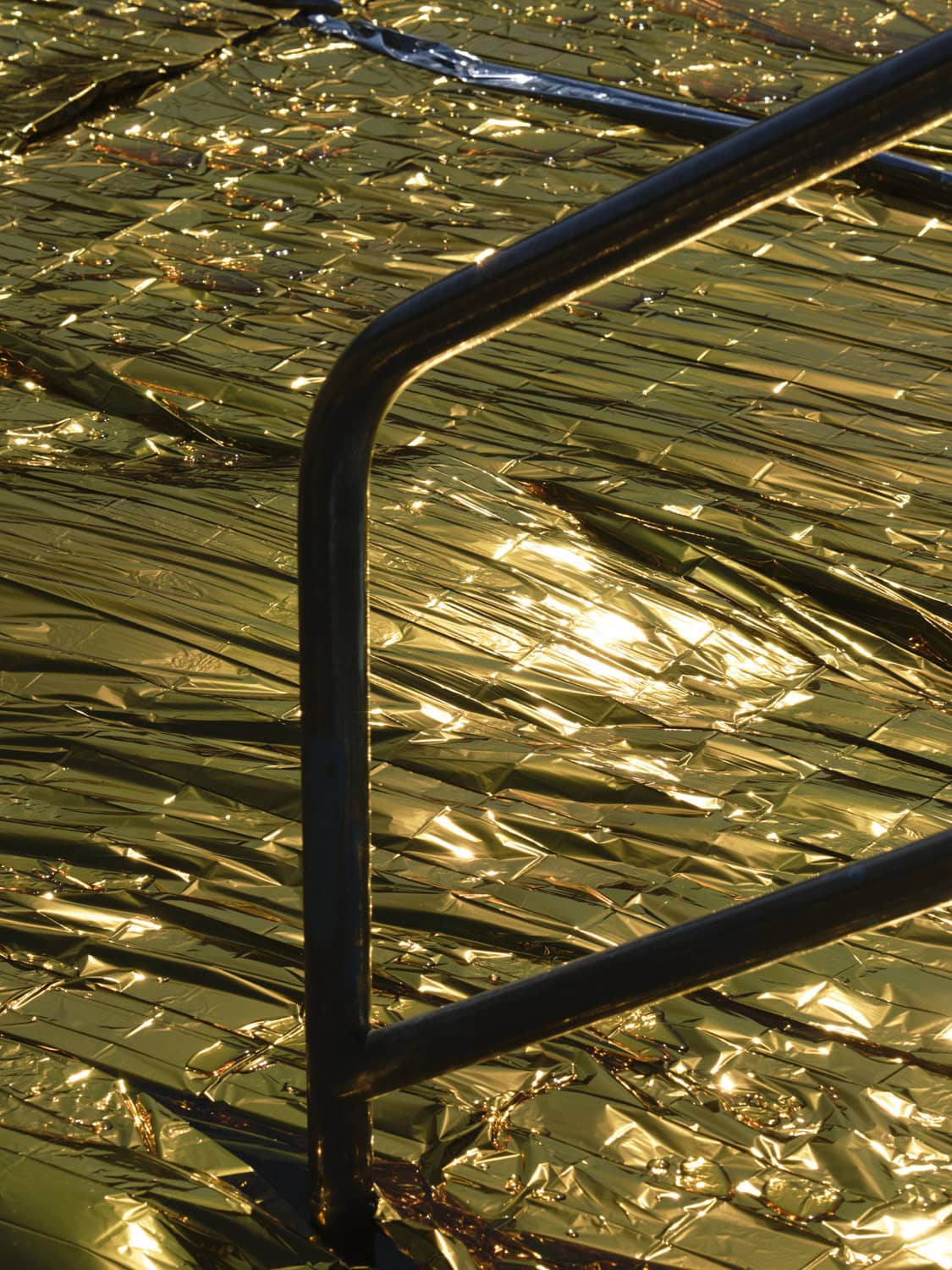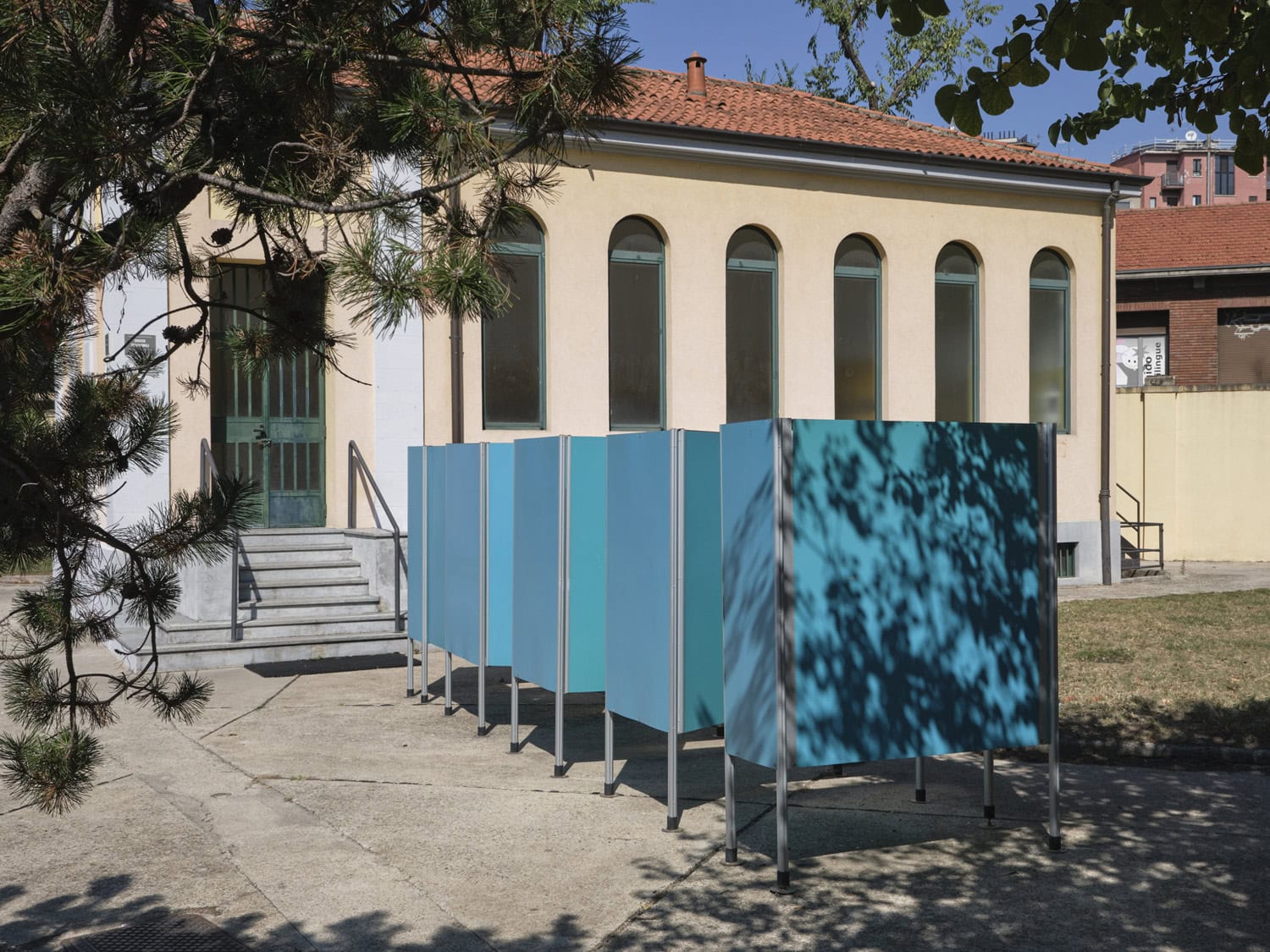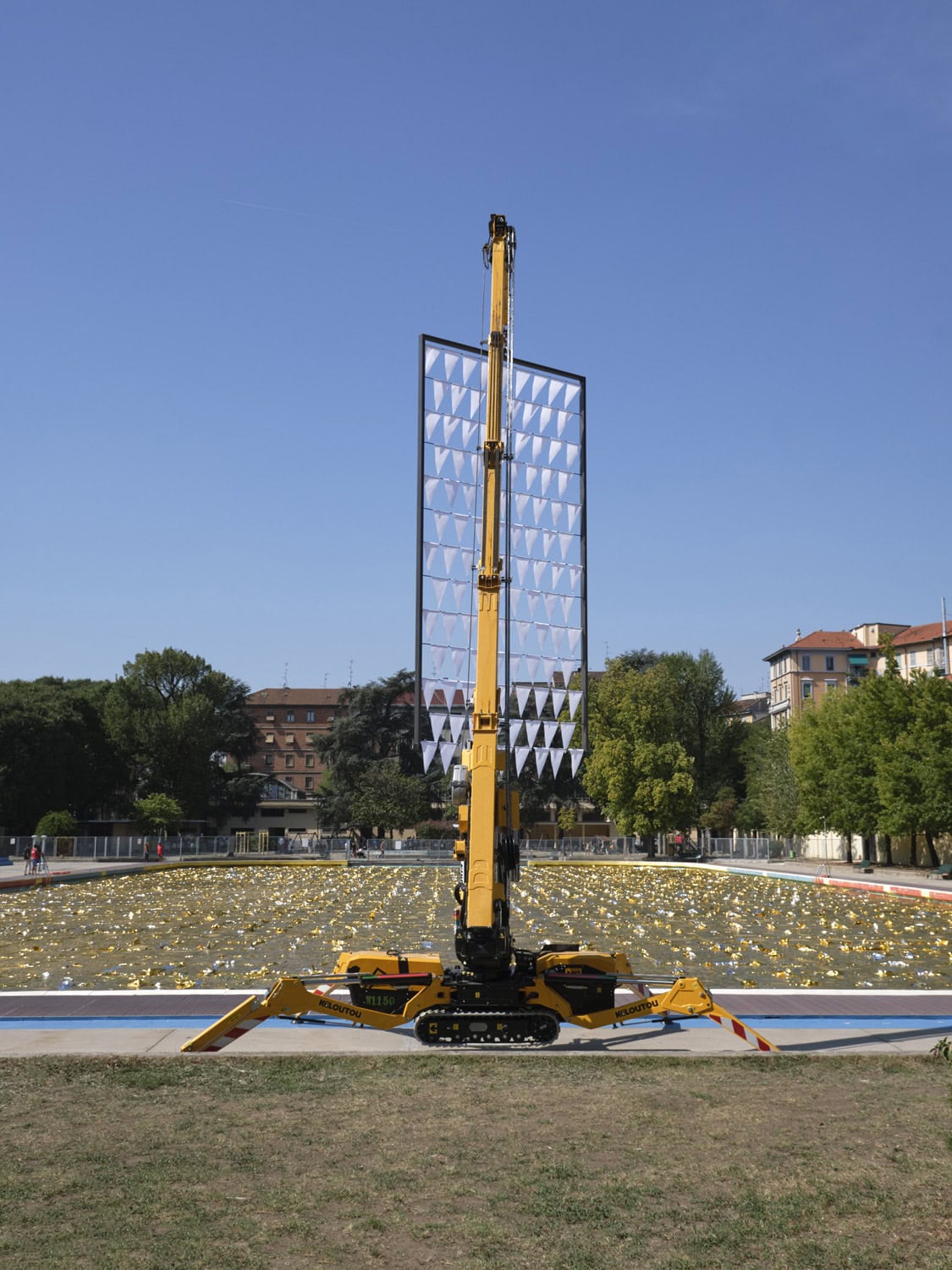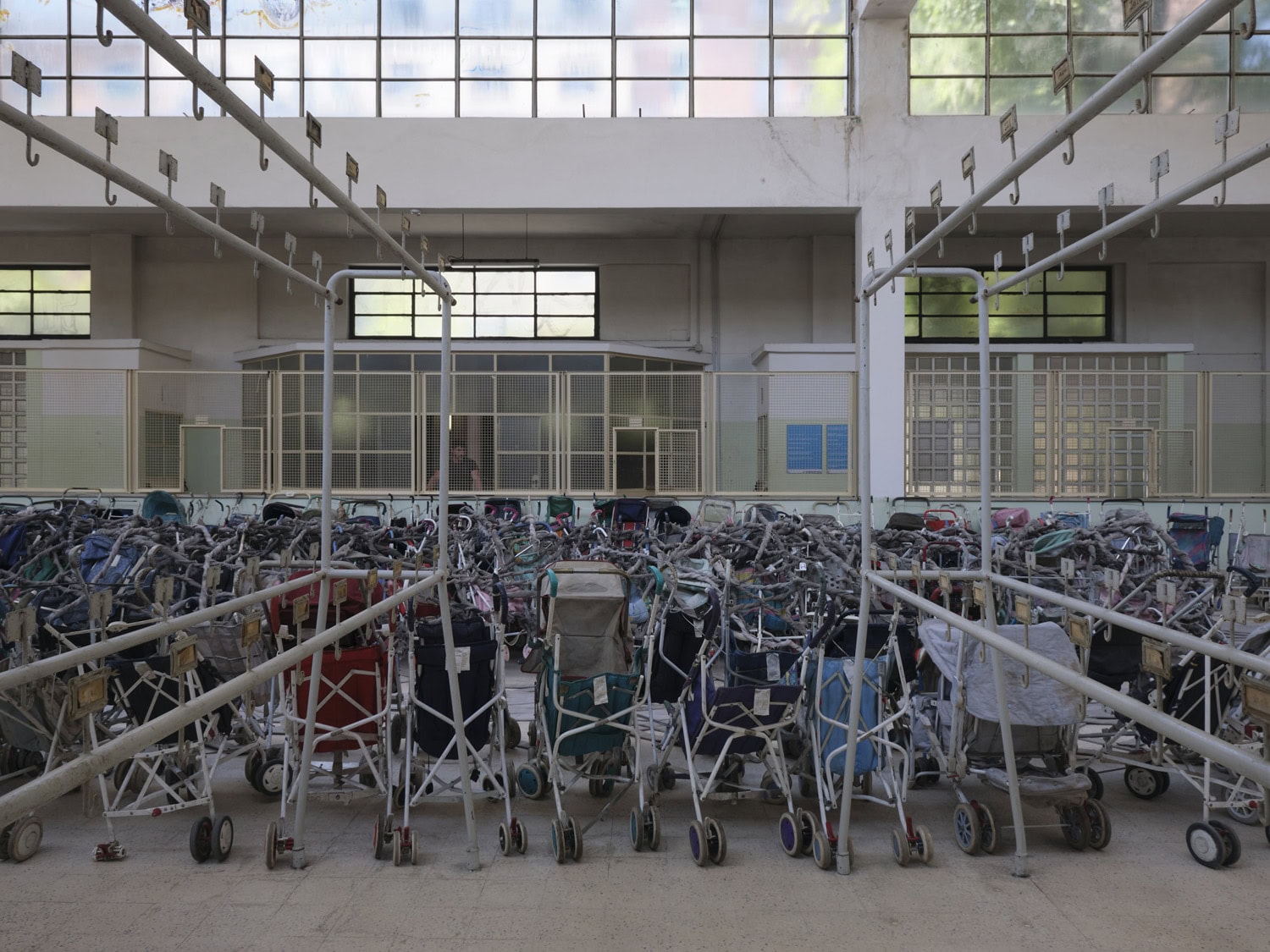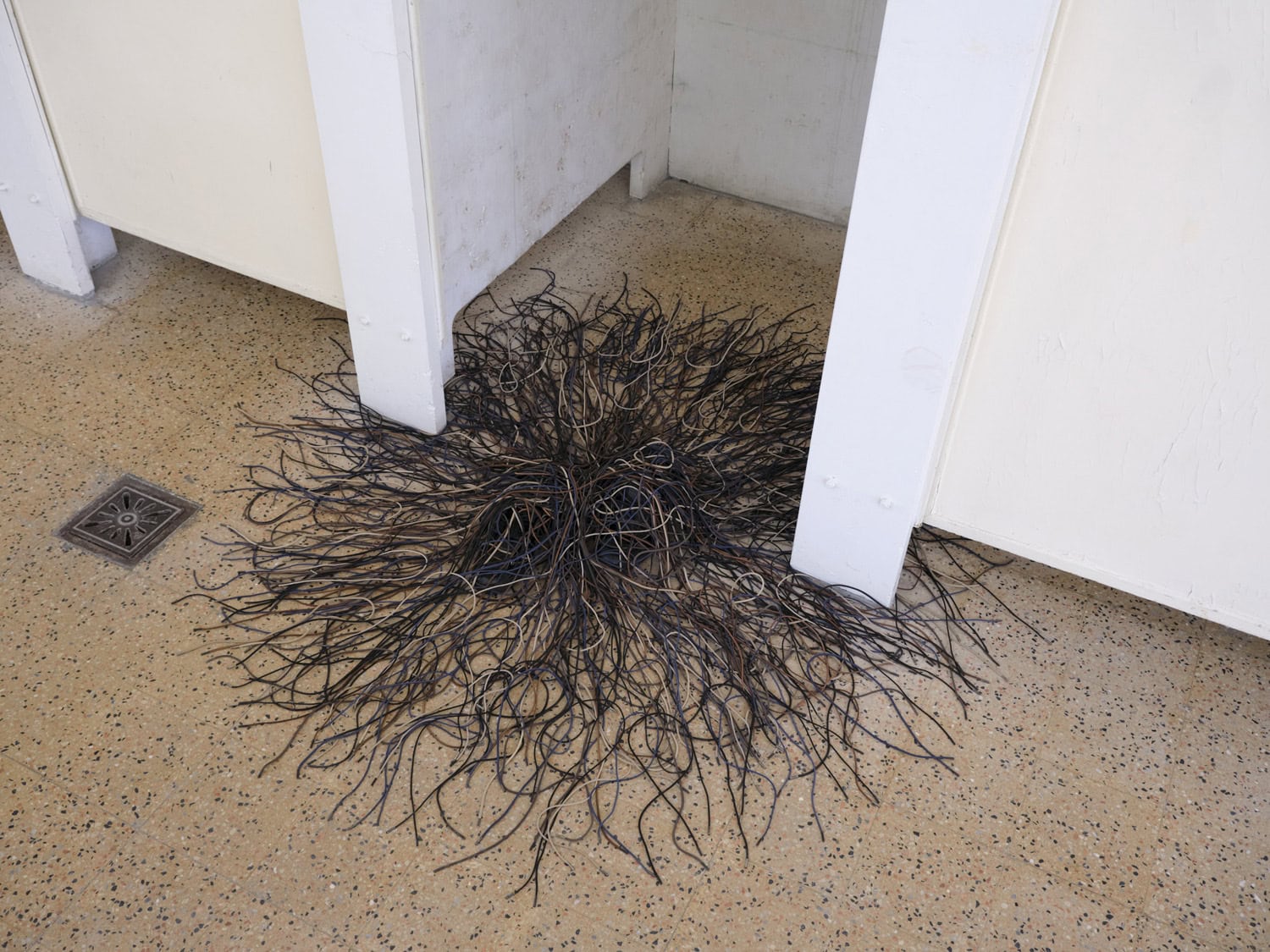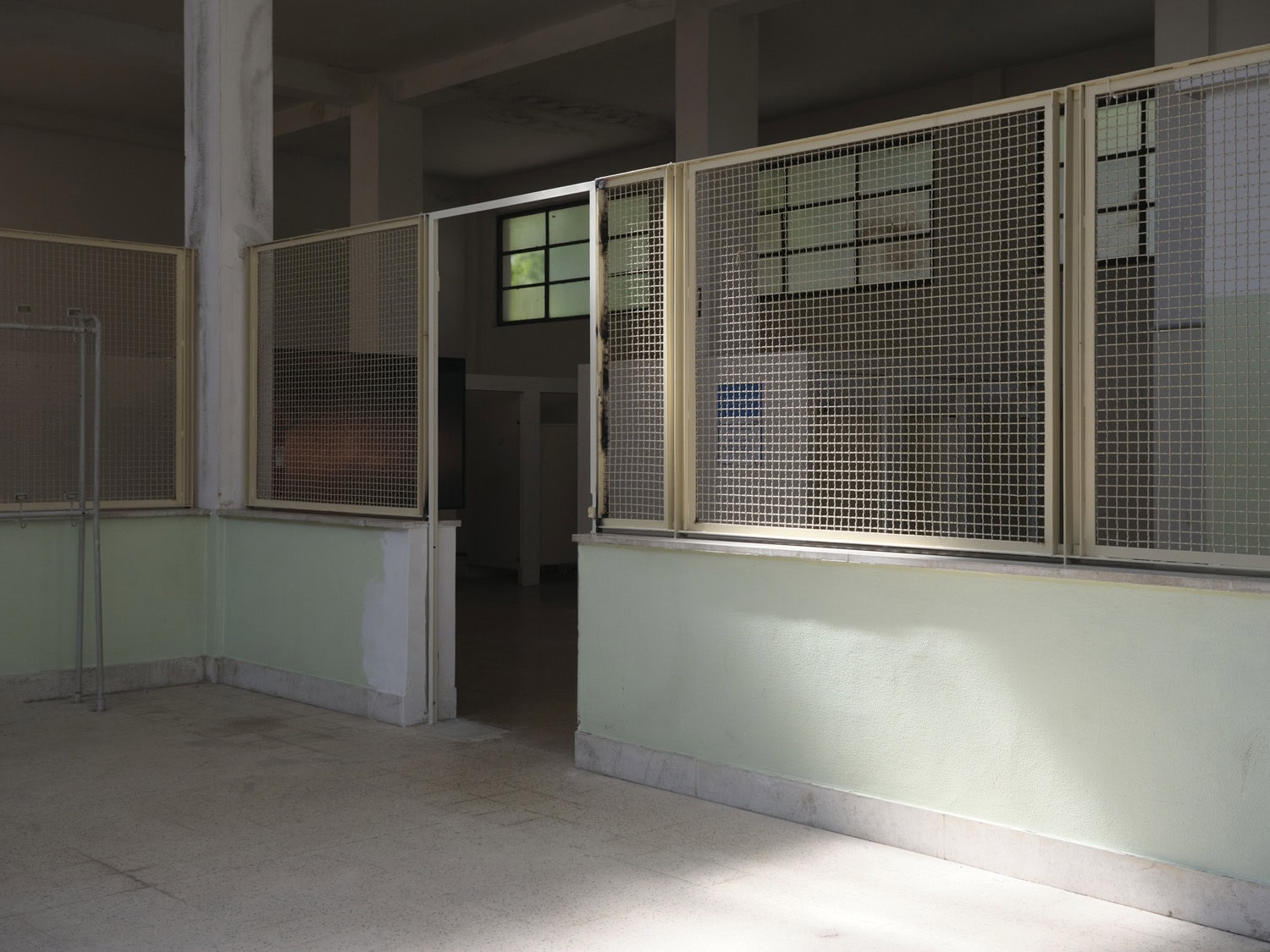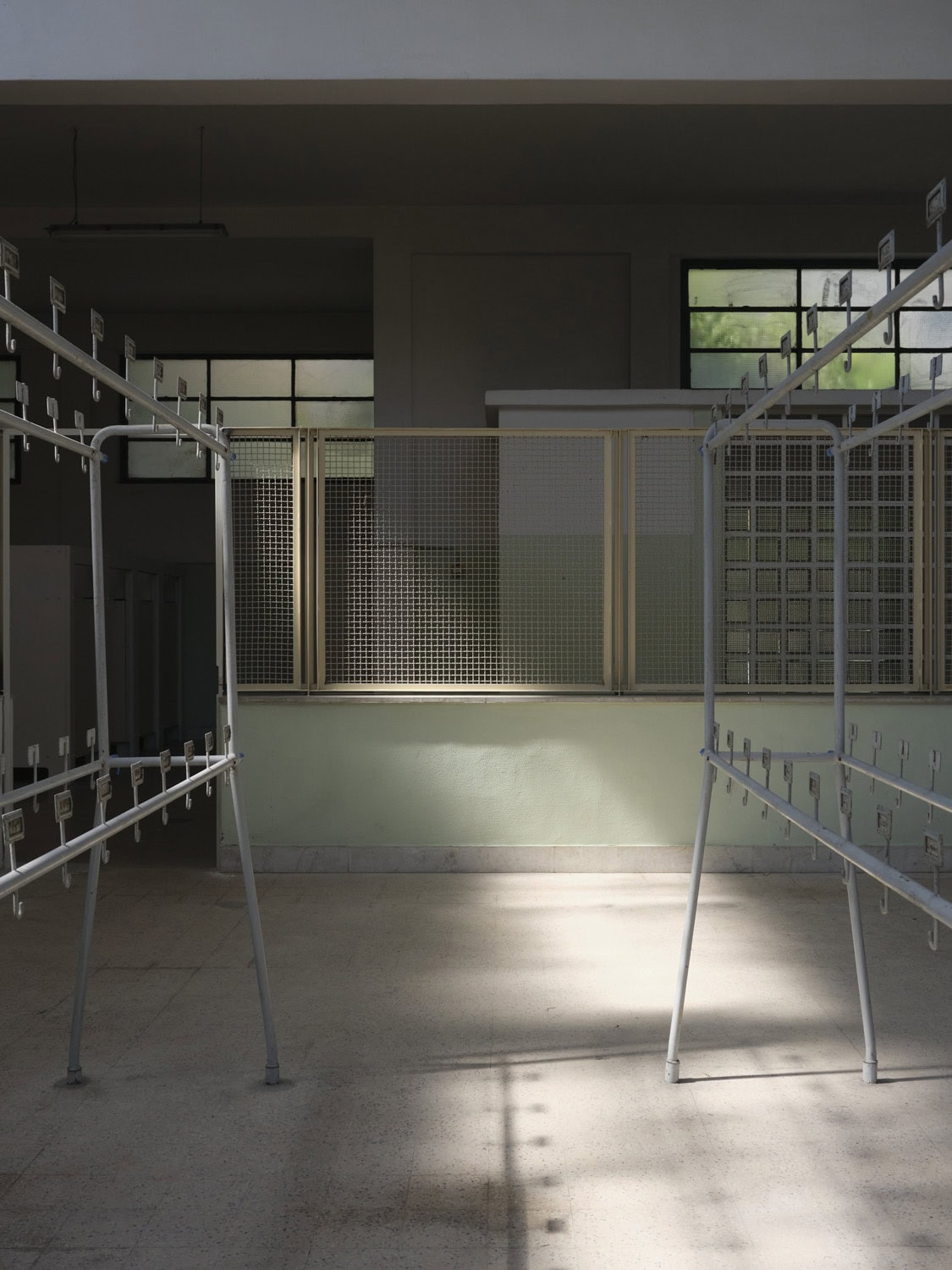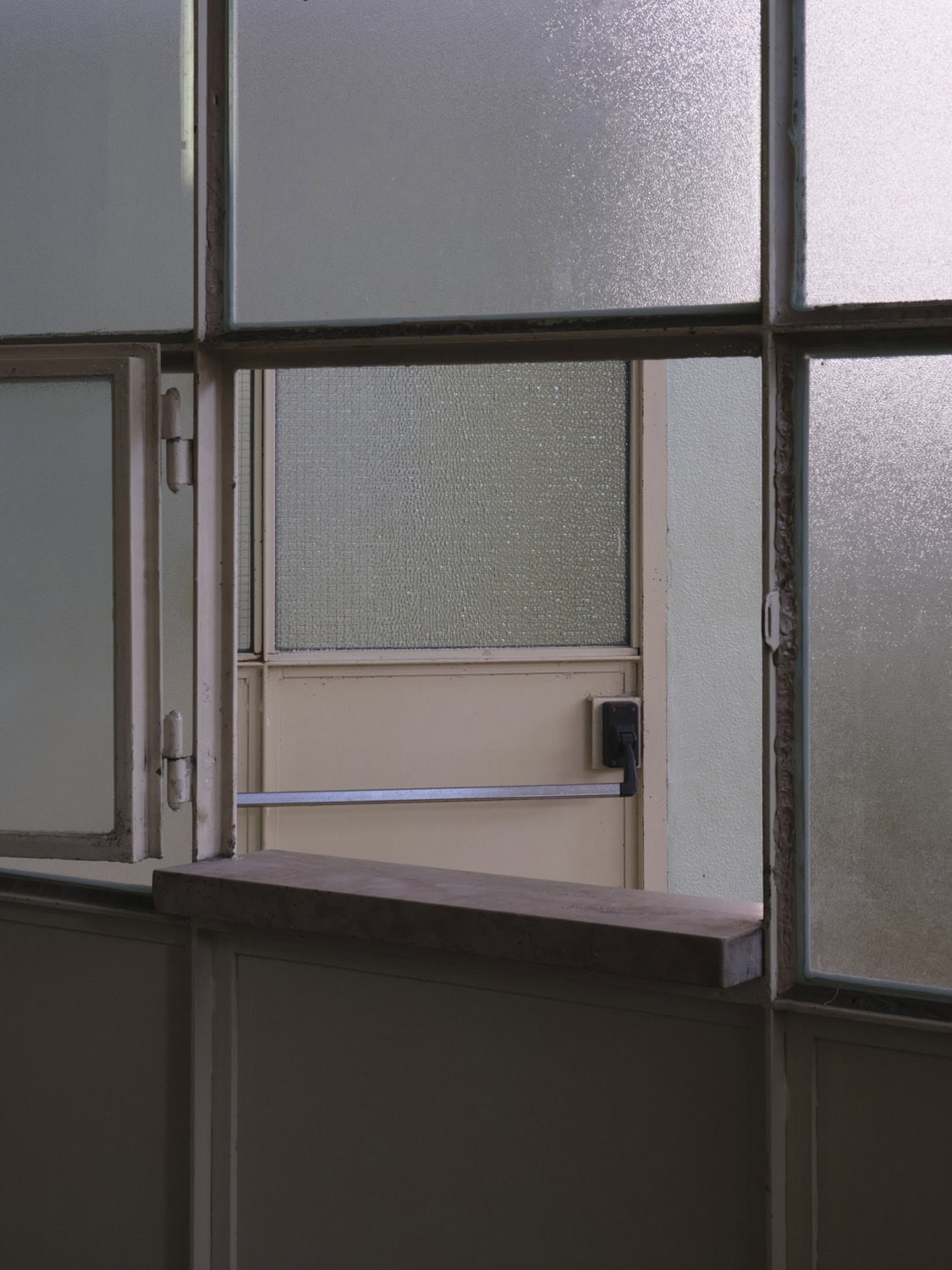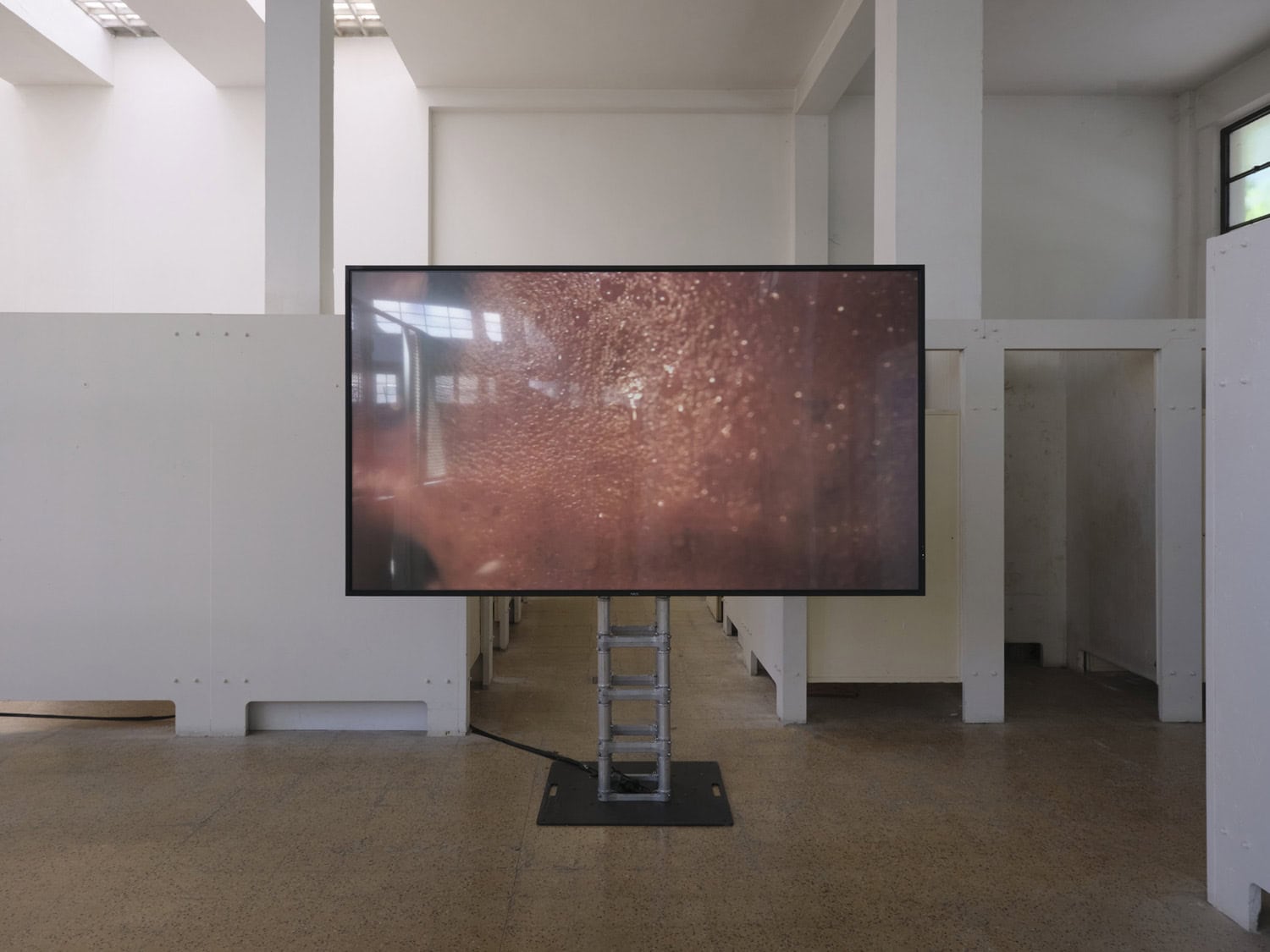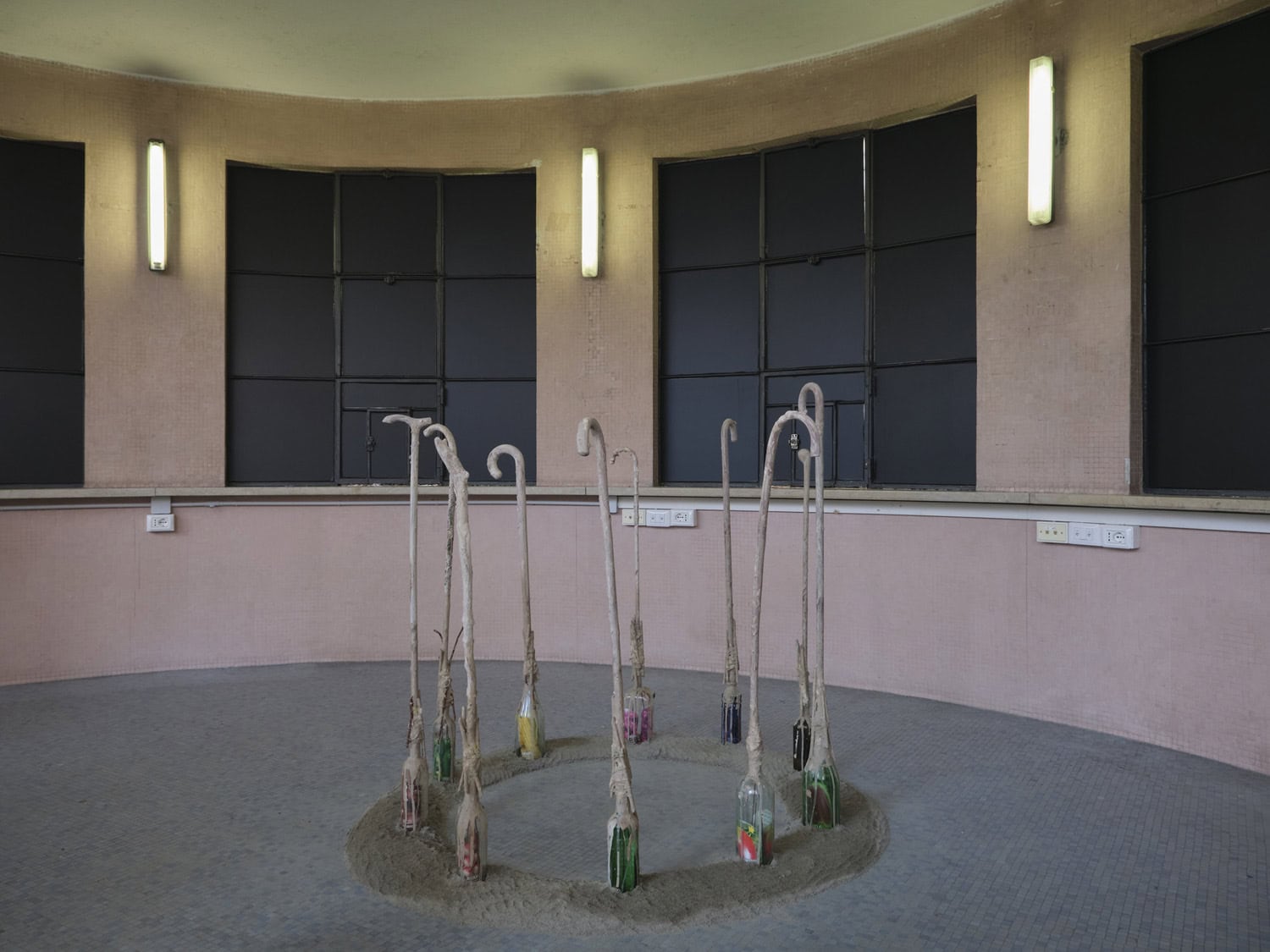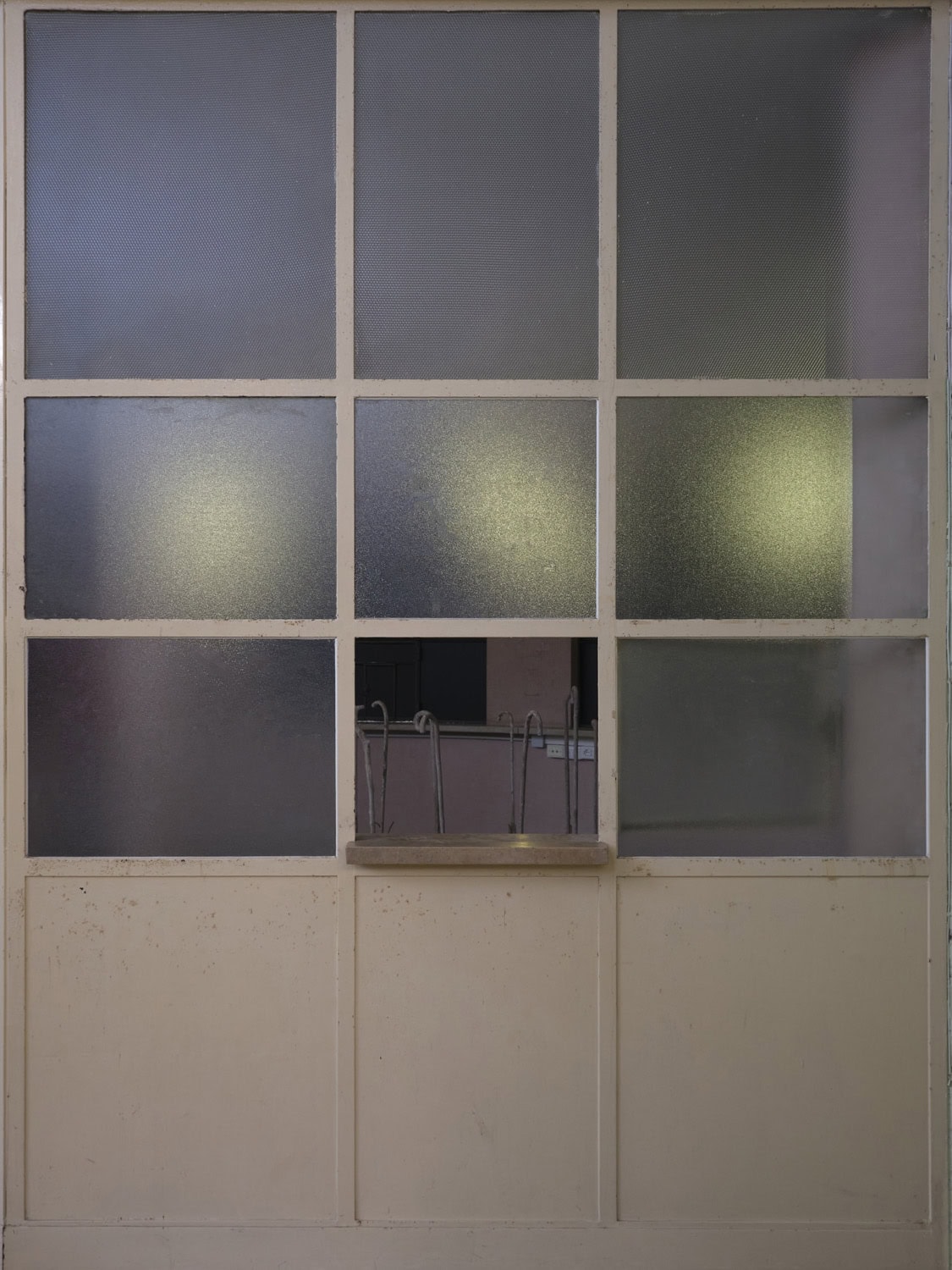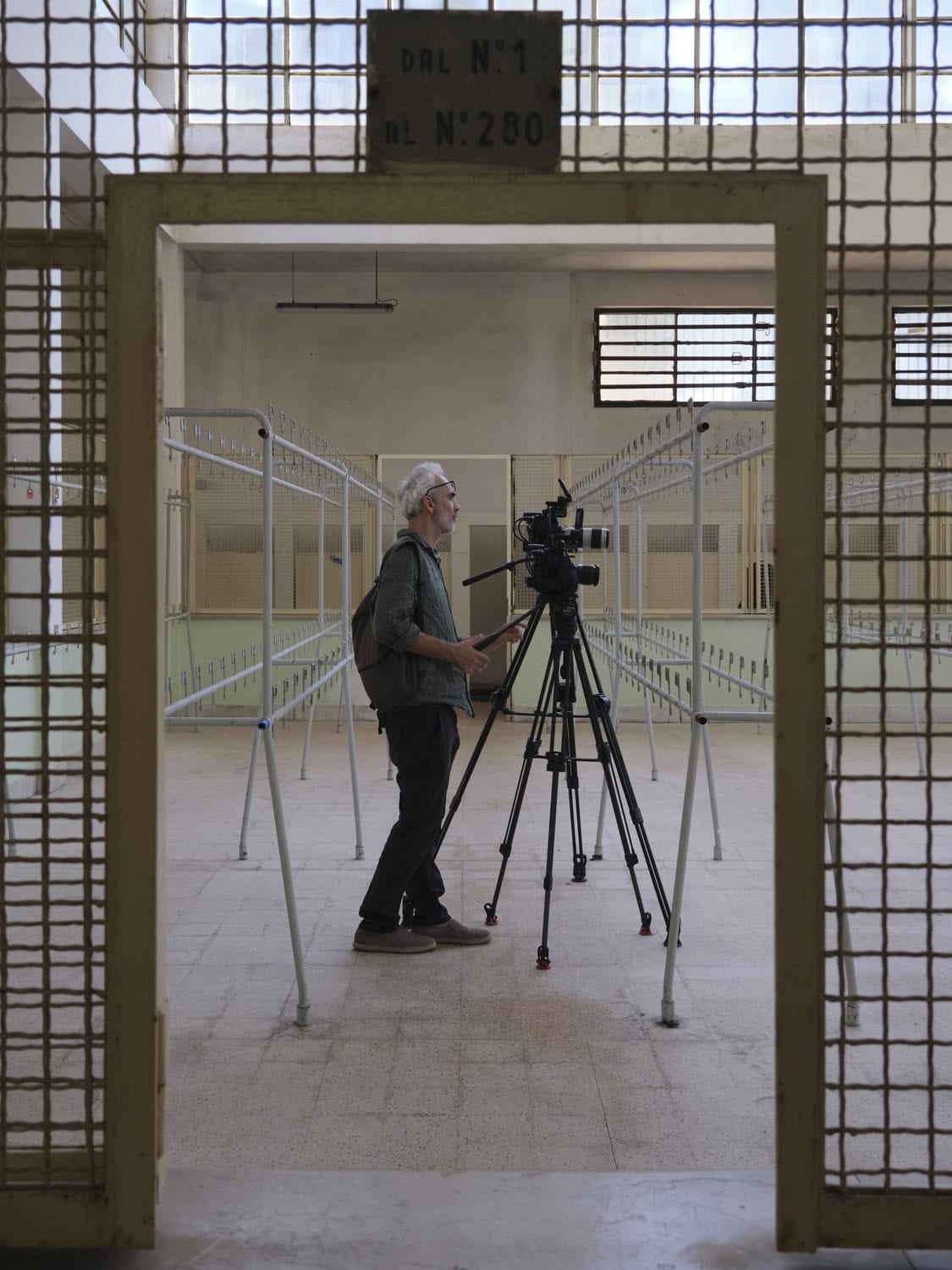“Amazing Grace, how sweet the sound / That saved a wretch like me / I once was lost but now I’m found / Was blind, but now I see”
These words of redemption and transformation are the first impression of the visitor with the exhibition Gilded Darkness by Nari Ward, organized by Fondazione Trussardi in Milan. The powerful gospel of Mahalia Jackson fills the dressing room of the Romano pool, while through the cage once hosting the wardrobe one can glimpse the elongated and multiform mass of one of the most famous installations of the artist: Amazing Grace (1993).
To create this installation the artist, of Jamaican origins but grown as an artist in New York, obsessively collected abandoned strollers found in the empty lots that at the time were one of the signals of the social and economic inequality of Harlem. The work was presented for the first time in a former fire station precisely in Harlem, which later became Ward’s exhibition space and studio.
Almost four hundred strollers are arranged to recall the elongated structure of a boat and specifically, a slave ship, crossed by walkways made from numerous fire hoses, which wrap the central part of the installation to form a web. The artwork is an ode to transformation, just like Amazing Grace, written by a slave owner turned abolitionist: there we can see change through birth and death, and through the power of water and combustion.
It is a work, in the words of the artistic director of the Trussardi Foundation and the New Museum of NY, Massimiliano Gioni: “that I think is still somehow unrecognized in its importance in turning sculpture into installation, nowadays we are very accustomed to speaking of installation and environmental scale […] it was a major turning point in the transition from sculpture to space, I think both in your career and in the history of the 1990s.” (Dialogue between Massimiliano Gioni and Nari Ward, 09 September 2022, Fondazione Luigi Rovati, Milano, Italy)
Of the artworks that are presented in the exhibition, some historical ones such as the one just mentioned and others created specifically for the occasion, it would be impossible not to mention the site-specific intervention Emergence Pool (2022). The Centro Balneare Romano hosts one of the largest swimming pools in the city of Milano, which for the occasion has been used in its entirety to host an extremely impressive installation. The 4000sqm of the pool have been covered with golden emergency blankets, creating an alienating and evocative bright foil on the surface of the water. Both these installations deal with the issue of migration in profoundly evocative terms and draw their meaning from accumulation. The process of layering materials in Ward’s works is paradoxically able to clarify the meaning of his works and, as he demonstrated on this occasion, to transform garbage and found objects into gold.
In Ward’s creative career, the social and spatial context has always been a key element to give momentum to his works. They are pervaded by a sense of community and ambiguous belonging, empowering and at the same time ferocious, that invests every aspect of his experience: the neighbourhood with its rites, America and being American in your country and the world. Context plays an equally essential role in this exhibition each of these works speaking of a conflictual coexistence is enclosed by the faded frame of this sports center built in 1929 and dedicated to the Olympic champion Giulio Romano. The athlete and spirit of the place become the symbol of rhetoric propaganda, focused on the cult of heroism and competition, and celebrated abundantly by the gigantic size of the place. In this context, Ward’s anti-monuments take on a problematic aura: the wardrobe cage that encloses Amazing Grace and the pool fence that surrounds Emergence Pool, echoing the cages and fences of Ghettos and refugee camps, create an overload between the aesthetic, political and social value of the works in this exhibition.
